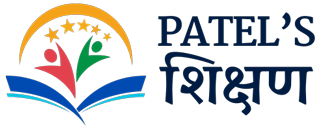“Head, Shoulders, Knees, and Toes” is one of the most popular nursery rhymes worldwide, sung by children as both a fun activity and a valuable learning tool.
While singing the song, children touch or point to their body parts in the order they are mentioned.
This rhyme helps children learn:
The names of various body parts.
Where these body parts are located on their bodies.
How to match actions with words.
How to enjoy music, rhythm, and movement.
Thus, it combines learning, fun, and physical activity.
What is the Rhyme About?
The rhyme lists different body parts:
Head
Shoulders
Knees
Toes
Eyes
Ears
Mouth
Nose
When children sing, they touch each body part as they name it.
For example, they touch their head when they say “head” and their knees when they say “knees.”
Example: Imagine a child singing, “Head, shoulders, knees, and toes,” while pointing to each part.
This makes the rhyme both musical and physical!
Learning About Body Parts
This rhyme teaches important body parts.
Let’s understand each clearly.
Head
The top part of the body.
It contains the brain, which helps with thinking, learning, and remembering.
It also has hair on top.
Example: We use our head to nod “yes” or shake “no.”
Shoulders
The part between the neck and arms.
They assist in lifting and moving the arms.
Example: We carry school bags on our shoulders.
Knees
The middle part of the legs.
They help in bending and walking.
Example: We bend our knees when sitting down or playing football.
Toes
The small fingers on our feet.
Toes help with balance when standing and walking.
Example: Try standing on your toes like a dancer — that’s how strong they are!
Eyes
Two on our face.
They help us see things around us, like colors, people, books, and toys.
Example: We use our eyes to read a storybook.
Ears
Two on each side of the head.
They help us hear sounds.
Example: We use our ears to listen to lessons or music.
Mouth
The opening in our face.
Used for eating, drinking, and talking.
Example: We use our mouth to sing this rhyme!
Nose
Helps with breathing and smelling.
Also completes our facial features.
Example: We smell flowers using our nose.
Why is This Rhyme Special?
This rhyme is not only fun but also educational.
It is special because:
It teaches body awareness, helping children identify where their body parts are.
It improves memory, as children remember the order of body parts.
It gives exercise, as bending to touch knees and toes keeps children active.
It develops coordination, as children move while singing.
It brings joy, as children laugh, sing, and enjoy with friends.
Example: In classrooms, teachers often start the day with this rhyme to wake up children and energize them.
Actions with the Rhyme
The most fun part is the actions.
Here’s how:
When singing “Head,” tap your head.
When singing “Shoulders,” touch your shoulders.
When singing “Knees,” bend down and touch your knees.
When singing “Toes,” bend more and touch your toes.
Then, touch your eyes, ears, mouth, and nose one by one.
Example: If ten kids sing together and do the actions, it looks like a mini exercise class with lots of smiles!
Learning Through Play
Children learn best when they play.
This rhyme is like a game.
Teachers and parents often make it more exciting by:
Singing it slowly, then faster and faster.
Making children compete to do actions correctly.
Using music and dance to make it lively.
Example: At home, parents sing it with babies to teach them body parts in a playful way.
Babies, who may not speak yet, try to touch their head or nose when they hear the words.
Real-Life Connections
The rhyme also connects with our real lives.
When we are sick, we tell the doctor which body part hurts (like the head or knee).
When we play games, we use shoulders, knees, and toes to move.
When we study, we use our eyes to read, ears to listen, mouth to speak, and head to think.
Example: If your knee hurts while playing, you can say, “My knee hurts,” because you learned the word “knee” from the rhyme.
Creative Activities with the Rhyme
Teachers often add activities to make learning stronger.
Drawing Activity: Kids draw a body and label head, shoulders, knees, toes, eyes, ears, mouth, and nose.
Coloring Activity: Color each part in different colors.
Flashcards: Show a picture of a body part, and kids point to it on their own body.
Role Play: One child sings, others follow actions like a leader.
Example: Teacher says, “Show me your nose,” and all the kids touch their noses.
Values and Skills Kids Learn
This rhyme teaches children more than just body parts.
Listening skills: Following the song carefully.
Teamwork: Singing and dancing together.
Confidence: Standing up and performing.
Health awareness: Knowing how body parts function.
Example: A shy child may become more confident after performing the rhyme in front of classmates.
Variations of the Rhyme
Sometimes teachers change the speed or style to keep it interesting:
Fast Version: Sing very quickly for fun.
Whisper Version: Say the words softly.
Silent Actions: Do actions without singing, only moving.
Example: Kids love the “super fast” version where they giggle while trying to keep up.
